
Virginia is a diverse state which has a wide range of ecosystems and habitats in it. More than 3,180 square miles of the state consist of water, so it’s not surprising to find that there are a vast number of aquatic and semi-aquatic animals that live in the state. However, although many of these animals are harmless there are a few which can be quite dangerous. So let’s discover the most dangerous animals in Virginia’s lakes and rivers!
1. Northern Cottonmouth
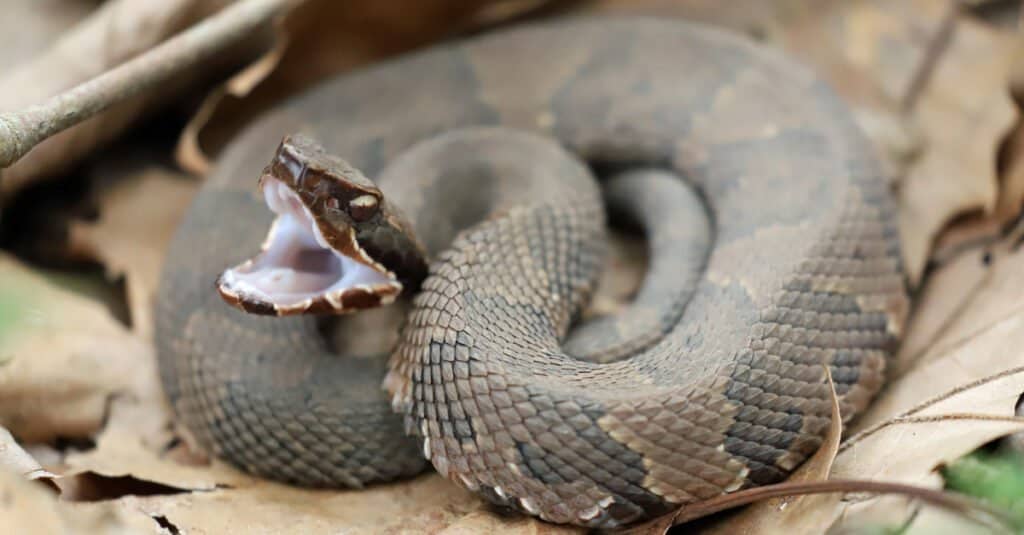
Cottonmouths are the only venomous pit vipers in the US.
©KF2017/Shutterstock.com
The first snake on our list is the only venomous snake that you will encounter in the water in the US – the northern cottonmouth. Northern cottonmouths are typically 30 to 42 inches long and have dark brown bodies which are overlaid by a series of darker — often black — crossband markings. However, their most distinguishing feature is the bright white lining inside their mouth. Cottonmouths often expose this when they coil their bodies and open their mouth wide in a defensive posture.
Cottonmouths inhabit most freshwater locations — including swamps, streams, rivers, and lakes. However, they only occur in the far southeastern corner of Virginia. They are excellent swimmers and prey on a variety of fish, frogs, and toads. Cottonmouths possess cytotoxic venom which, although not as deadly as some of the other types, can still cause serious tissue damage. In many cases, this leads to extensive scarring, and can even result in amputation of the affected limb being required. Cottonmouths are not naturally aggressive and will typically flee back into the water when they are disturbed. However, they may strike out if they are cornered.
2. Bull Shark
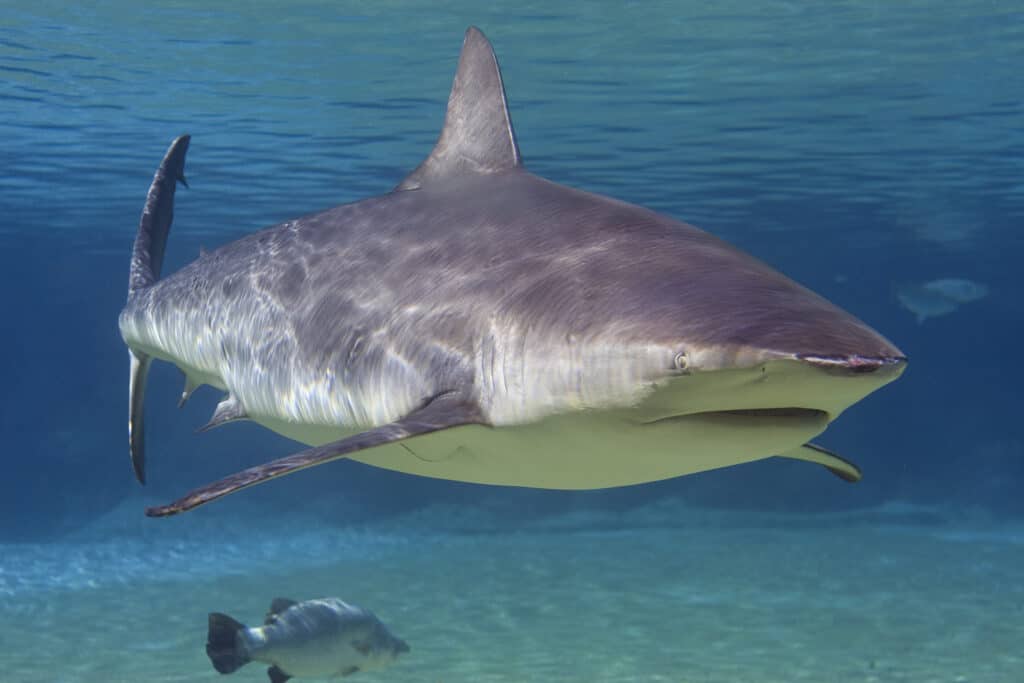
Bull sharks have the ability to tolerate freshwater for long periods of time.
©Ian Scott/Shutterstock.com
Now, you might find it quite surprising to see a shark on a list of the most dangerous animals in Virginia’s lakes and rivers, but actually, bull sharks are perfectly capable of surviving in freshwater. In fact, there are some instances where they have been spotted miles upstream, with sightings occurring in the James River in Virginia. They are also the sharks which are often regarded as being responsible for the deadly 1916 Jersey Shore attacks which were the inspiration for Jaws because some of the attacks occurred upstream in fresh and brackish water.
Bull sharks have this unique ability to be able to tolerate freshwater thanks to their large liver. Sharks don’t have swim bladders, so they have oil-filled livers to help them stay afloat instead. Freshwater isn’t as buoyant as saltwater, so to compensate bull sharks have a larger liver than sharks that live exclusively in a marine environment. This is also the reason that bull sharks have a particularly stocky, robust body. Bull sharks are typically around 11 feet long and are incredibly powerful apex predators. However, thankfully they are a rarer sight in Virginia than some of the other animals on our list.
3. Catfish
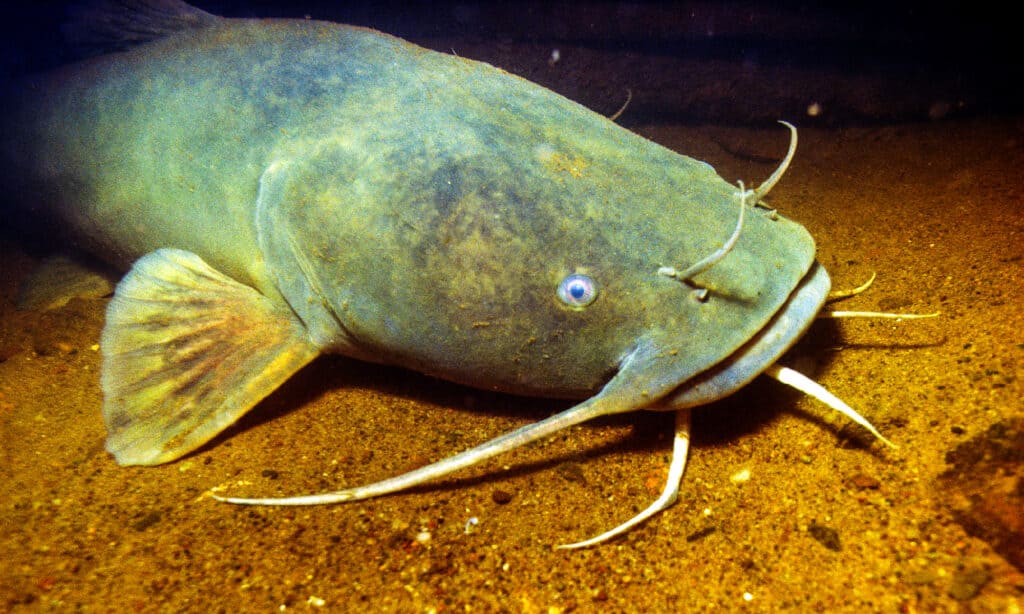
Most catfish have sharp spines on their dorsal and pectoral fins which they can use to inject a stinging protein with.
©iStock.com/stammphoto
Catfish are some of the most common fish in Virginia and they are also incredibly popular with anglers. They live in virtually all river systems across the state, as well as in many lakes. James River and Rappahannock Rivers, in particular, are regarded as some of the best places to find catfish in the state.
There are several species of catfish in Virginia, including blue, channel, flathead, and white catfish. Blue catfish are the largest, with a massive 143-pound blue catfish being the largest fish ever caught in the state. Most catfish have spines on their dorsal and pectoral fins. These can be used as a form of defense as they are sharp and point outwards. They can also be used to inject a type of protein that causes an extreme stinging sensation. However, most problems only arise if they are accidentally stepped on or when they are being handled.
4. Common Snapping Turtle
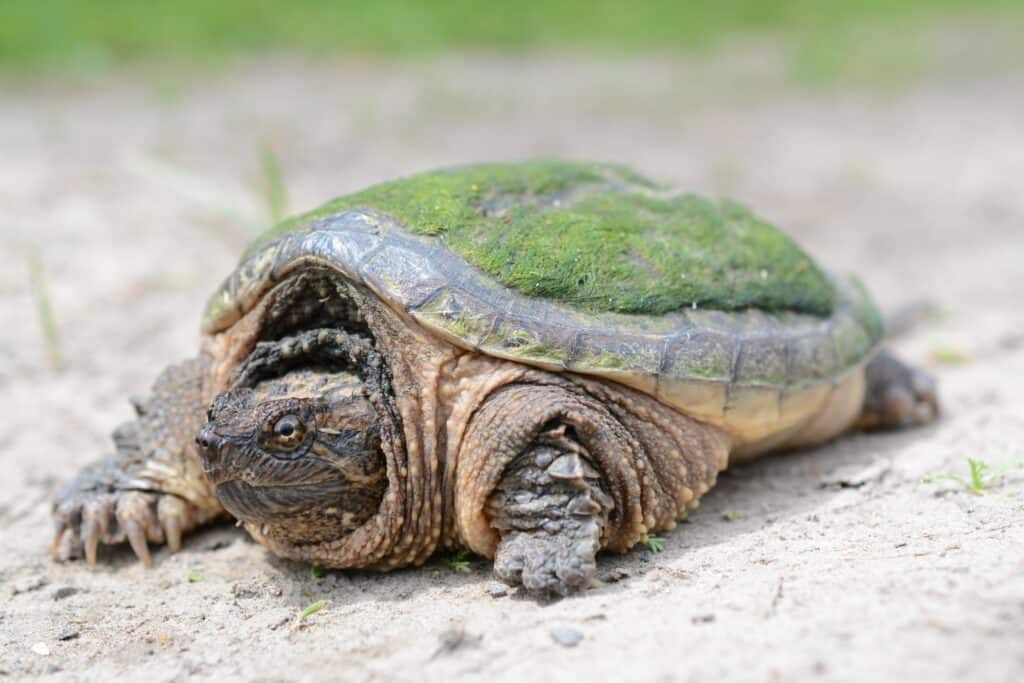
Common snapping turtles can be highly defensive during the breeding season.
©Trevor Meunier/Shutterstock.com
Snapping turtles are another dangerous animal in Virginia’s lakes and rivers that are fairly common across the state. Although there are three species of snapping turtles, it is the common snapping turtle that is native to the state. Common snapping turtles live statewide and inhabit most aquatic areas — including swamps, streams, lakes, rivers, ponds, and even some brackish water. Common snapping turtles typically have a carapace length of 10 to 18 inches and can weigh up to 35 pounds. Their carapace is ridged and they also have a large, powerful beak.
Common snapping turtles do not usually pose a threat to people while they are in the water. However, they can be defensive while they are on the land, especially during the breeding season which lasts from April to November. Common snapping turtles are omnivores and eat a variety of plants and animals such as fish, frogs, crayfish, insects, spiders, and small mammals.
5. Longnose Gar

The longnose gar has an elongated snout with rows of sharp teeth.
©iStock.com/User10095428_393
Longnose gar are long, slender fish that can reach approximately three to four feet long. They are typically brown with a silver or white belly. They have a particularly long snout with rows of small, but extremely sharp teeth. Longnose gar mainly inhabits slow-moving rivers and streams where they prey on a variety of fish, amphibians, and insects. They spawn in the spring in shallow water so the eggs can be deposited on aquatic vegetation. Longnose gar are quite popular with anglers and the Chickahominy, James, Pamunkey, and Rappahannock rivers are popular fishing spots. However, as they have such sharp teeth they can be dangerous when they are handled. Furthermore, their eggs are poisonous if they are consumed.
6. Pickerel Frog
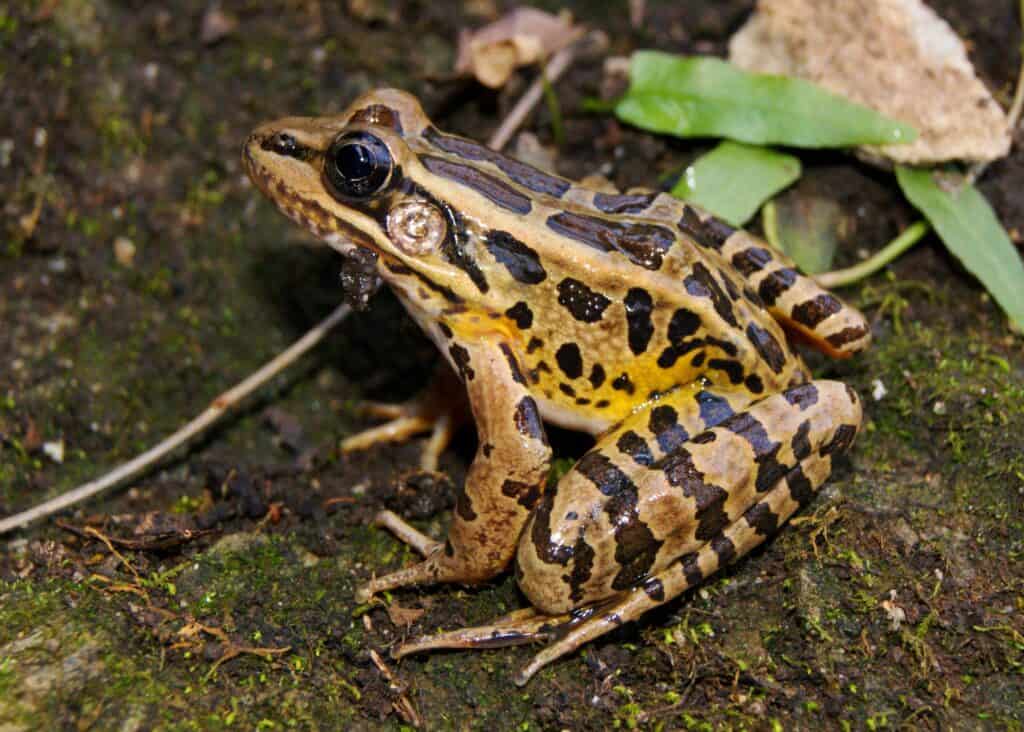
Pickerel frogs have toxic skin secretions which cause a stinging sensation.
©Matt Jeppson/Shutterstock.com
The final dangerous animal in Virginia’s lakes and rivers is the pickerel frog. Pickerel frogs are approximately two to four inches long and have up to 21 rectangular brown markings in two rows down their back. They live across the majority of the state, with the exception of the southeastern corner. Pickerel frogs usually inhabit lakes, streams, rivers, and ditches, although they can sometimes be observed quite far from water. They produce toxic secretions in the skin which can be an irritant to humans if they are touched, although they do not typically cause serious problems. However, they are toxic to some of their predators, which results in most snakes and birds avoiding them.
Summary of 6 Dangerous Animals Found in Virginia’s Lakes and Rivers
| Animal | Potential Danger | |
|---|---|---|
| 1 | Northern Cottonmouth | Venom can cause tissue damage |
| 2 | Bull Shark | Aggressive attacks can cause serious wounds or death |
| 3 | Catfish | Sharp spines can cause an intense stinging sensation |
| 4 | Common Snapping Turtle | Bite can cause painful, serious wound |
| 5 | Longnose Gar | Sharp teeth can cause injuries to fishermen removing hooks |
| 6 | Pickerel Frog | They produce toxic secretions in their skin that causes irritation |
The photo featured at the top of this post is © Psychotic Nature/Shutterstock.com
Thank you for reading! Have some feedback for us? Contact the AZ Animals editorial team.






